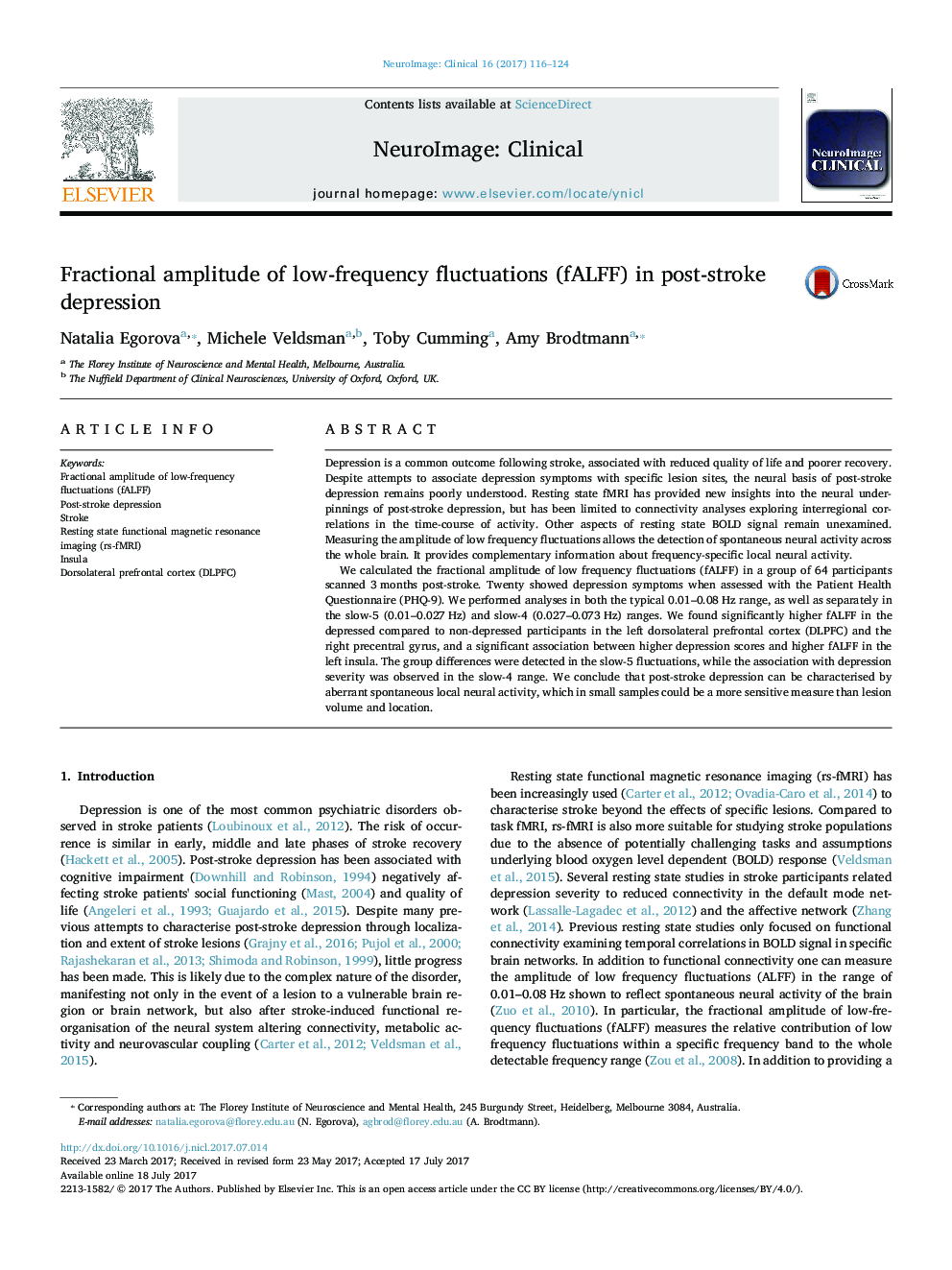| Article ID | Journal | Published Year | Pages | File Type |
|---|---|---|---|---|
| 8688175 | NeuroImage: Clinical | 2017 | 9 Pages |
Abstract
We calculated the fractional amplitude of low frequency fluctuations (fALFF) in a group of 64 participants scanned 3Â months post-stroke. Twenty showed depression symptoms when assessed with the Patient Health Questionnaire (PHQ-9). We performed analyses in both the typical 0.01-0.08Â Hz range, as well as separately in the slow-5 (0.01-0.027Â Hz) and slow-4 (0.027-0.073Â Hz) ranges. We found significantly higher fALFF in the depressed compared to non-depressed participants in the left dorsolateral prefrontal cortex (DLPFC) and the right precentral gyrus, and a significant association between higher depression scores and higher fALFF in the left insula. The group differences were detected in the slow-5 fluctuations, while the association with depression severity was observed in the slow-4 range. We conclude that post-stroke depression can be characterised by aberrant spontaneous local neural activity, which in small samples could be a more sensitive measure than lesion volume and location.
Related Topics
Life Sciences
Neuroscience
Biological Psychiatry
Authors
Natalia Egorova, Michele Veldsman, Toby Cumming, Amy Brodtmann,
